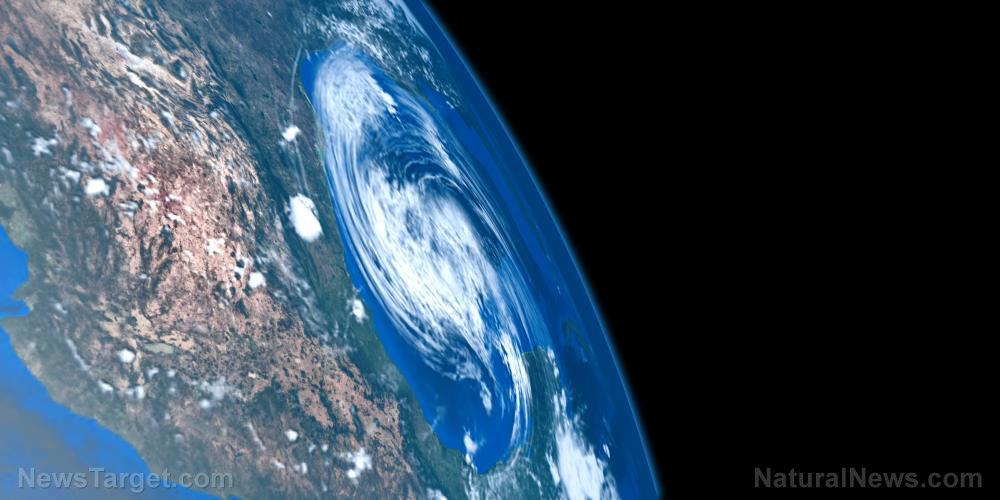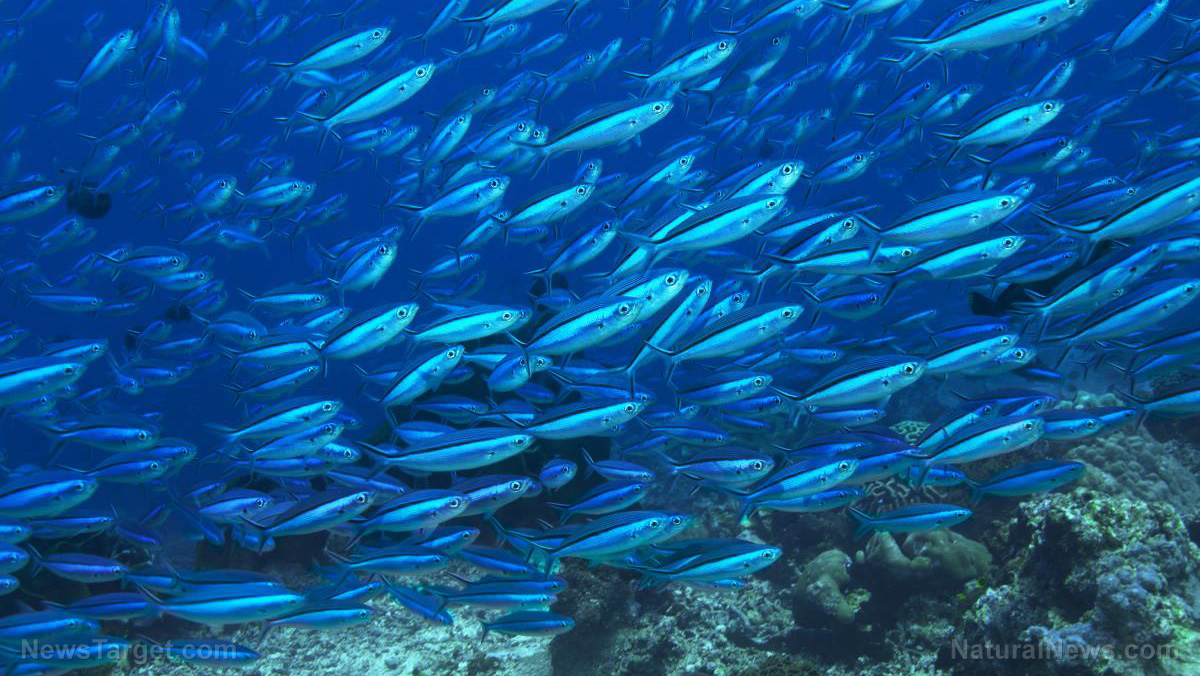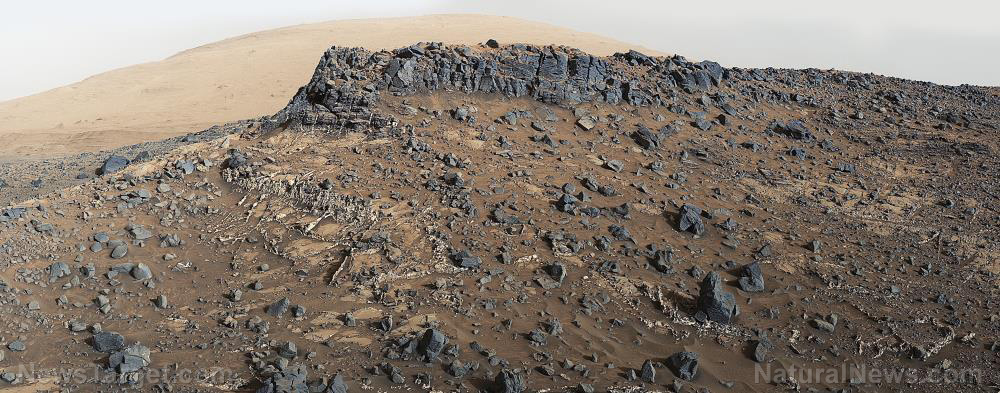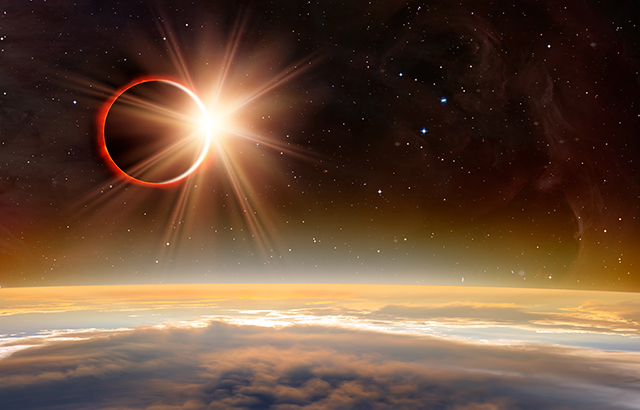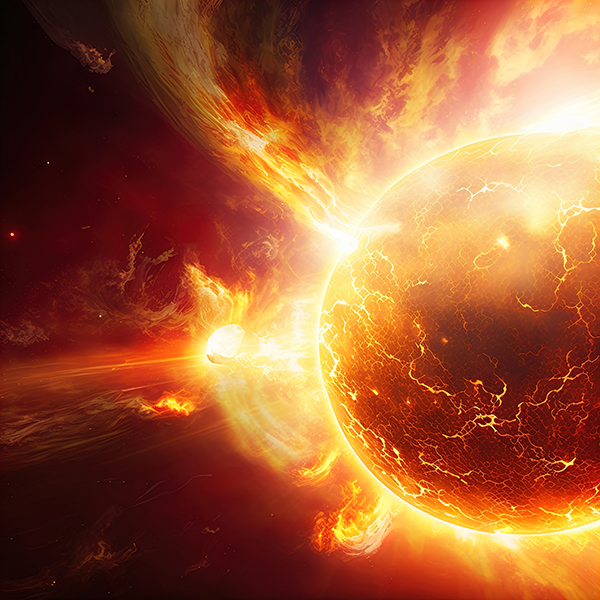Phantom of the Caspian: NASA captures mysterious GHOST ISLAND that vanished without a trace
01/15/2025 / By Kevin Hughes
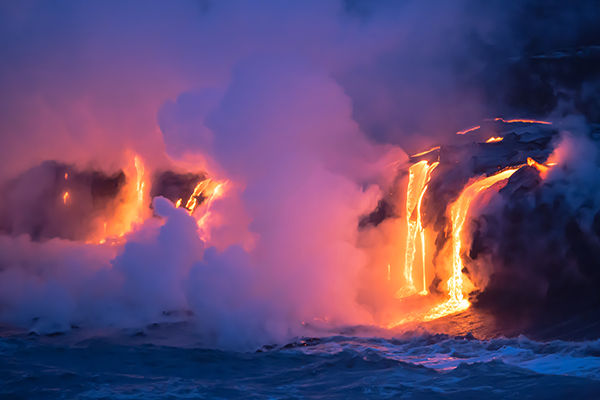
- In early 2023, a transient island appeared in the Caspian Sea and vanished by the end of 2024. The island’s birth and death were captured by NASA satellites.
- The island was formed by the eruption of the Kumani Bank mud volcano, located off the eastern coast of Azerbaijan. It measured about 1,300 feet across at its peak and was visible for less than two years.
- This transient island is part of a series of similar formations produced by the Kumani Bank mud volcano since 1861. Previous eruptions have also created temporary islands.
- Mud volcanoes like Kumani Bank, while little understood, provide valuable insights into Earth’s geological processes, particularly in tectonically active regions. They are linked to hydrocarbon systems and can emit flammable gases like methane.
- The study of these transient islands and mud volcanoes helps scientists understand the planet’s dynamic geology, hydrocarbon systems and the environmental impacts of gas emissions, making them a subject of interest for researchers and observers.
In a phenomenon that seems ripped from the pages of a science fiction novel, a mysterious “ghost island” appeared in the Caspian Sea in early 2023, only to vanish entirely by the end of 2024.
Captured by Landsat 8 and 9 satellites of the National Aeronautics and Space Administration (NASA), the island emerged following the eruption of the Kumani Bank mud volcano, located approximately 15 miles off the eastern coast of Azerbaijan.
Measuring about 1,300 feet across at its peak, the island left scientists both fascinated and perplexed as it eroded away “like an apparition,” according to NASA’s Earth Observatory.
This fleeting landmass is the latest in a series of transient islands produced by the Kumani Bank volcano since its first recorded eruption in 1861, offering a rare glimpse into the dynamic and unpredictable nature of Earth’s geological processes.
The story of the ghost island began in November 2022, when NASA satellites first captured images of the Kumani Bank mud volcano’s crest still submerged beneath the Caspian Sea. By Feb. 14, 2023, the island had risen above the water, leaving a visible sediment plume trailing through the sea. Geologist Mark Tingay of the University of Adelaide noted that the island likely formed between Jan. 30 and Feb. 4, 2023, and measured approximately 400 meters (1,300 feet) across.
However, the island’s existence was short-lived. By December 2024, it had nearly disappeared, with only a small portion of the Kumani Bank visible above the water. NASA described the island’s retreat as “like an apparition,” a fitting metaphor for a landmass that seemed to defy the permanence typically associated with islands.
This phenomenon is not unique to the 2023 eruption. The Kumani Bank mud volcano has produced similar transient islands since its first recorded eruption in 1861. That event created an island just 87 meters (285 feet) across and 3.5 meters (11.5 feet) high, which eroded entirely by early 1862. The most significant eruption occurred in 1950, producing an island 700 meters (2,300 feet) across and six meters (20 feet) high.
Mud volcanoes: A geological enigma
Mud volcanoes like the Kumani Bank are “weird and wonderful features that remain largely understudied and little understood,” according to Tingay. These geological formations occur when subsurface pressure forces a mixture of fluids, gases, and sediments to the surface. Azerbaijan, where the Kumani Bank is located, is home to an unusually high concentration of mud volcanoes, with more than 300 documented both on land and offshore in the Caspian Sea. (Related: Volcanic eruptions can produce a rock that floats on water.)
The region lies within a convergence zone where the Arabian and Eurasian tectonic plates collide, creating the perfect conditions for mud volcano activity. These formations are often linked to hydrocarbon systems such as the South Caspian Basin, which is known to emit flammable gases like methane alongside the characteristic muddy sludge.
While mud volcanoes are fascinating, they can also be hazardous. Past eruptions have sent towers of flame hundreds of meters into the air, and the 2023 Kumani Bank eruption may have been no exception.
“It is uncertain if the 2023 Kumani Bank eruption was fiery, but past eruptions of this and other nearby mud volcanoes have sent towers of flame hundreds of meters into the air,” NASA noted.
The appearance and disappearance of the ghost island highlight the dynamic and ever-changing nature of Earth’s geology. For scientists, these transient landmasses offer valuable insights into the processes that shape the planet, particularly in tectonically active regions like Azerbaijan.
Moreover, the study of mud volcanoes has broader implications for understanding hydrocarbon systems and their environmental impacts. The flammable gases emitted during eruptions, such as methane, are potent greenhouse gases, making these formations a subject of interest for climate researchers.
For the people of Azerbaijan, mud volcanoes are both a natural wonder and a potential hazard. The country’s unique geological landscape has made it a hotspot for researchers and tourists alike, but it also requires careful monitoring to mitigate risks associated with eruptions. The ghost island of the Caspian Sea may have vanished, but its brief existence serves as a reminder of the planet’s capacity for surprise.
Follow Discoveries.news for more stories like this.
Watch this clip about the volcanic eruption that created the phantom island in the Caspian Sea.
This video is from the END TIME NEWS channel on Brighteon.com.
More related stories:
Archaeologists find records of Pompeii’s survivors, proving many survived Mount Vesuvius eruption.
Sources include:
Submit a correction >>
Tagged Under:
Azerbaijan, Caspian Sea, discoveries, Earth, Earth Observatory, geology, greenhouse gases, hydrocarbon, Kumani Bank, Mark Tingay, mud volcano, mud volcanoes, mysterious, NASA, scientific, tectonic plates, Unexplained, volcanic eruption
This article may contain statements that reflect the opinion of the author
RECENT NEWS & ARTICLES
Physics.News is a fact-based public education website published by Physics News Features, LLC.
All content copyright © 2018 by Physics News Features, LLC.
Contact Us with Tips or Corrections
All trademarks, registered trademarks and servicemarks mentioned on this site are the property of their respective owners.

